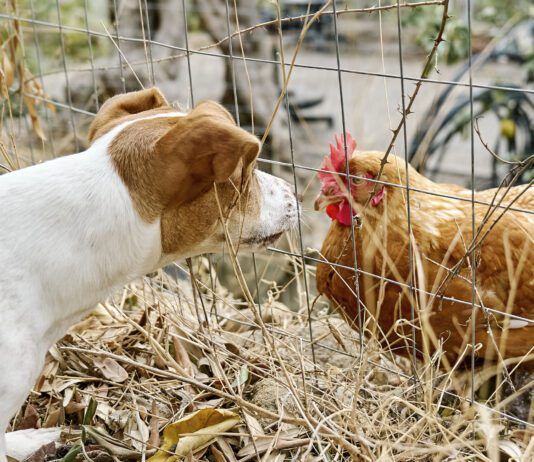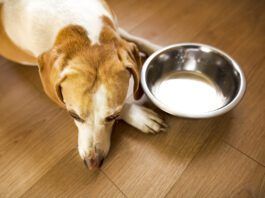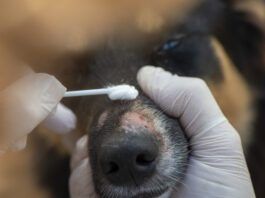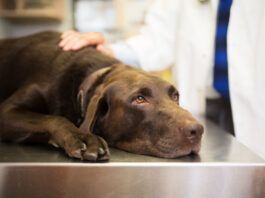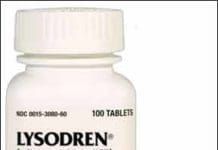Addison’s Disease; Adding “Real” Foods; Canned Plants
Thank you so much for the recent article published about Addison’s disease in dogs. The day I read it my dog Hayleigh was showing almost every symptom, some she’s had on and off for years. The final clue was the frequent urination, which had started the day before. Because I read the article prior to taking her to the vet I knew to ask for the ACTH test in addition to the urine sample, which came back positive for primary Addison’s.
Complementary Care for Dogs with Cushing’s Disease
Because the diagnosis and treatment of Cushing's disease can be confusing, expensive, and fraught with adverse side effects, many caregivers turn to alternative or complementary therapies. For those who prefer treatments that have been proven in double-blind, placebo-controlled clinical trials, unconventional therapies are themselves fraught with peril. Product testimonials and anecdotal reports don't prove anything, and by turning first to an herbal preparation or glandular extract, one might deny the patient an opportunity for effective treatment.
Diagnosing Atypical Cushing’s Disease in Dogs
What if your dog has all the symptoms of Cushing's excessive drinking, urination, and appetite; pot belly; skin problems; elevated alkaline phosphatase; etc. but the tests say no? Veterinary endocrinologists at the University of Tennessee in Knoxville (UTK) have been investigating this phenomenon. They found that many dogs have elevated steroid intermediates (also called steroid precursors or sex steroids") with normal cortisol. They call this condition "atypical Cushing's disease
Iatrogenic and Pseudo-Cushing’s in Dogs
A very small percentage of Cushing's cases result from medical treatments for other conditions, such as the use of prednisone or other corticosteroid medications to control allergies, arthritis, or autoimmune conditions. This is called iatrogenic" (doctor-caused) Cushing's. In these cases
Diagnosing Cushing’s Disease in Dogs
Sometimes life-threatening illnesses develop so slowly that no one pays much attention. An older dog who's always thirsty drinks huge quantities of water. He's hungrier than usual and has developed a thin coat and pot belly. He pants all the time, and now his hind legs are losing muscle tone and getting weak. Many owners dismiss these as normal signs of aging, but they are classic symptoms of Cushing's disease, which affects an estimated 100,000 dogs in the U.S. every year.
Rabies Challenge Fund Studies are in Year Four
Rabies is nearly always fatal to the animals (including humans) who become infected with the disease. That’s why vaccinating our dogs against this deadly virus is required by state law – in order to protect public health, by preventing transmission of this disease from infected wildlife to our pets and to us. Each states requires that dogs and cats be vaccinated for rabies every one, two, or three years.
Holistic Care for Dogs with Addison’s Disease
While treatment of Addison's disease focuses on prescription drugs and electrolyte tests, holistic veterinarians add various support therapies to help their patients. Nutrition is the cornerstone of every holistic therapy, and while diet cannot cure Addison's disease, foods made of poor-quality ingredients or diets that lead to nutritional deficiencies are a significant source of stress, and additional stress is just what Addison's dogs don't need. Because wheat, corn, and soy are problem ingredients for some dogs, many holistic veterinarians recommend avoiding them. Some tell their clients to avoid grains altogether.
Addison’s Disease in Dogs: Detection and Treatment
Somethings wrong with your dog but youre not sure what. She seems listless, her eyes have lost their spark, and she just seems off. You might notice intermittent muscle weakness, tremors, and an inability to jump into the car or onto a sofa. Or your dog frequently ignores her dinner, vomits, or has diarrhea. These vague symptoms, which may improve and then return, could stem from a dozen canine illnesses or they might point to Addisons. Addisons disease, named for the 19th century physician who defined this adrenal gland dysfunction, is also known as hypoadrenocorticism or adrenal insufficiency. While fatal if left untreated, with appropriate treatment Addisons can be managed so that affected patients lead normal, active lives. First diagnosed in dogs in the 1950s, it is considered an uncommon canine disorder.
Diagnosing and Treatment Options for Symmetrical Lupoid Onychodystrophy or SLO
Dog nails aren’t supposed to fall off, thought first-time dog owner Terrie Huberman some 18 months ago. That’s when she first realized that finding one of her Pug-Poodle mix’s nails on the floor of her Sherman Oaks, California, apartment wasn’t an isolated incident. It all started when, after coming in from a walk, Terrie picked up what would turn out to be the keratin shell from one of Bonzo’s claws. At the time she thought it was something he’d tracked in from outside. Only later did she learn the shell was a telltale sign of Symmetrical Lupoid Onychodystrophy, SLO for short.
New Treatment for Pituitary-Dependent Cushing’s Disease
A surgical procedure used on humans to remove brain tumors that cause Cushing’s disease is now becoming available to dogs, thanks to collaboration between a human neurosurgeon, a veterinary endocrinologist, and a veterinary surgeon in the Los Angeles area.Cushing’s disease (hyperadrenocorticism, or HAC) is an adrenal disorder common in middle-aged and older dogs, affecting an estimated 100,000 dogs per year in the U.S. It occurs when the body produces too much cortisol, causing increased appetite and thirst, skin problems, and muscle weakness. Cushing’s can also predispose dogs to other conditions such as diabetes, pancreatitis, and infections.
Detecting Canine Anal Sac Problems
Anal sacs are located on either side of your dog’s anus, between the external and internal sphincter muscles. Depending on the dog, they range in size from that of pea to a lima bean. Sebaceous glands within the lining secrete a foul-smelling liquid. Under normal circumstances, the sacs empty on their own during bowel movements via a pair of ducts. This natural, routine emptying serves as a means of olfactory communication and establishing territory. Each dog possesses his own unique scent, which is why ritualized dog-to-dog greetings include copious rear-end sniffing. When a dog presents his rear for information gathering, the muscle movements involved in raising the tail apply pressure to the sac, prompting the release of additional scent.
Hemorrhagic Gastroenteritis in Dogs
The symptoms came on fast and furious. One day Chloe was a healthy, tail-wagging Labrador Retriever and the next day she was vomiting mucus all over the house. Then her vomit turned red with blood and then came matching diarrhea. Chloe had hemorrhagic gastroenteritis, or HGE. Hemorrhagic gastroenteritis is a mystery disease. No one knows what causes it and there is no recommended prevention. It does not seem to be contagious from one dog to another, although dogs living together sometimes develop HGE at the same time, and some parts of the country have reported outbreaks of several cases. It's most dangerous for small dogs, and although some veterinarians consider toy and miniature breeds between the ages of two and four the most typical HGE patients, males and females of all breeds and ages have been affected. There are few, if any, HGE warning signs. It is not usually accompanied by a fever. Diarrhea containing bright or dark red blood is the illness's signature symptom. Vomiting, which usually accompanies the diarrhea, typically begins as mucus or bile and then becomes bloody. Affected dogs may eat grass and vomit that as well.


